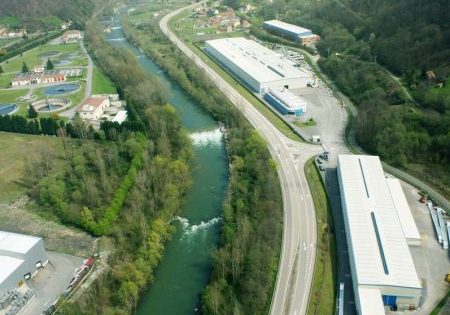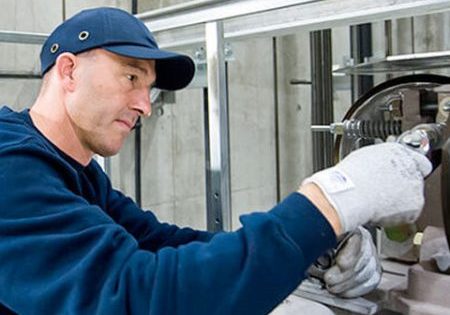Albert Betteley
Apr 1, 2022
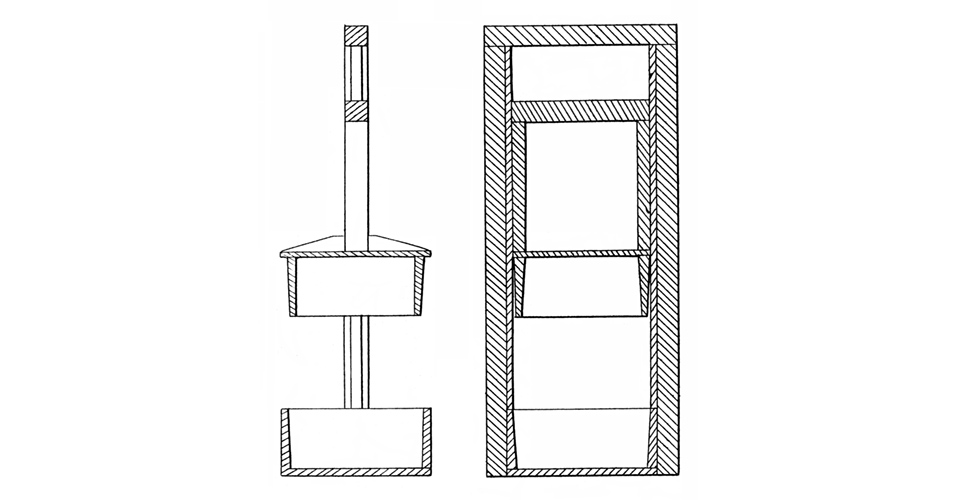
Your author explores the history of a Boston mechanic who was one of the VT industry’s early pioneers.
The December 22, 1857, issue of the Boston Evening Transcript included a feature article on the State Street Block, a recently completed commercial building designed by local architect Gridley J.F. Bryant. “There have been magnificent public buildings erected, ere this, in our own and other American cities; but never before such a structure, for the purposes of trade. . .The buildings themselves will long remain as an ornament to our city, and a proud monument to the comprehensive views of Boston capitalists.”[1] The reference to “buildings” referred to the fact that the massive building (425 X 125 ft, featuring one below-grade floor and five upper floors), was divided into 16 individual commercial spaces (or stores). The article also described the system of power — and vertical transportation (VT) — designed to serve the building’s future tenants:
“In store No. 9 is placed a steam engine of 100-horse power, connected with which is shafting running the entire length of the whole block of stores. The tenant of this building has to sign a written agreement that he will keep the engine running twelve months a year, and 12 to 14 hours per day. . .By means of hoisting apparatus, attached to the shafting in every store, a hogshead or box of any dimensions can be raised to the 6th story in about two minutes. The steam engine and hoisting apparatus were constructed by William Adams & Co., and reflect great credit upon their skill as machinists.”[1]
This marked one of the first large-scale installations of freight elevators in the U.S. The designer of the system was Boston mechanic Albert Betteley (1816-1893).
While [the air-cushion safety device] patent is the one most often cited by historians, it was, in fact, the first of five elevator patents Betteley received in 1859.
Unfortunately, nothing is known about Betteley’s education or training. He joined William Adams & Co. in the 1840s and, by the mid-1850s, was a partner. An account of the company published in 1857 highlighted his mechanical skills:
“Albert Betteley. . .is now the main business manager, and is not only shrewd and capable as Boston boys are remarkable for being, but has displayed much practical ingenuity in various ways, but more especially by the invention of the “Betteley Lock,” — at present, we believe, acknowledged to be the best safe lock in use.”[2]
This account also described the diverse range of products the company manufactured:
“Here are turned out in great variety, by fifty or more operatives, steam engines, patent Salamander Safes, bank locks, ships’ windlass gear, cast steel stone cutters’ tools, iron fences, cast iron building fronts, hoisting wheels, and in fact everything that can be wrought in iron, or made use of by machinists.”[2]
The fact that “hoisting wheels,” rather than elevators, were referenced is not surprising. Overt references to “elevators” did not become commonplace until the 1860s.
The only other published account of Betteley’s career appeared in W. Sloan Kennedy’s 1882 article, which outlined the history of VT in the U.S. The article included a brief description of Betteley’s State Street Block installation and the unexpected outcome of an accident that occurred in late 1858 or early 1859:
“Accidents were continually happening to the early elevators, owing to the breaking of ropes. It was an accident to an elevator of his own make that led Mr. Albert Betteley (of the firm of William Adams and Co., Boston) to the invention of the air-cushion safety-device, considered by many as the best of such devices. The accident alluded to [what] happened at the store of Emmons, Danforth, and Scudder, in the State Street Block. The elevator platform, loaded with seven boxes of sugar, had fallen from a great height into the cellar beneath the hoistway, and the pulleys and gearing at the top had been flung clear over on to the neighboring stores. Mr. Betteley was summoned to the scene. He, of course, expected to find a complete wreck in the cellar; but what was his surprise to find the boxes of sugar scarcely injured! He set his wits to work, and soon reached the conclusion that, as the cellar was nearly air-tight, the rapidity of the descent of the platform had compressed the air so as to form an air-cushion, which had broken the violence of the fall. After experimenting with a model, and satisfying himself of the truth of his surmise, Mr. Betteley took out a patent for an air-cushion.”[3]
This account confirms that the State Street Block elevators where platform machines (lacking an enclosed car), and it describes Betteley’s design process.
The application for the patent referenced by Kennedy was filed on April 1, 1859, and the patent for the air-cushion safety device, simply titled “Elevator” (U.S. Patent No. 23,818), was awarded on May 3, 1859 (Figure 1).
Betteley described its operation as follows:
“Taking advantage of the perfect elasticity of the air, I have formed a reservoir which will receive the car when it falls, and it will be obvious that all the air in the reservoir which does not escape during the descent of the car therein must be compressed, and will give a yielding but gradually increasing resistance to the onward movement of the car. The base of the car may be constructed with an apron around it like an inverted cup. . .when the car enters the reservoir it compresses and displaces the air therein which finds a vent in the space between the sides of the car base and the reservoir. . .so that when the car enters there will be space sufficient for the escape of the air, which prevents shock.”[4]
Although it is possible that Betteley’s device may have been employed on elevators built by William Adams & Co., there are no records of its actual use.
While this patent is the one most often cited by historians, it was, in fact, the first of five elevator patents Betteley received in 1859. Between April 22 and July 28, Betteley filed four additional applications, with all of the patents issued by the end of the year. Three patents addressed normative aspects of freight elevator systems, and concerned belt-driven machines similar to those used in the State Street Block. Two of these patents concerned improved belt shipper systems, and one concerned a safety designed to prevent the over-winding and unwinding of hoisting drum ropes:
- Elevator for Hoisting Goods in Warehouses, etc., U.S. Patent No. 24,188 (May 31, 1859)
- Elevator for Warehouses, Factories, Mines, etc., U.S. Patent No. 24,923 (August 2, 1859)
- Shipper Gear for Pulleys, U.S. Patent No. 25,169 (August 23, 1859)
Patent No. 25,169 described improvements to the typical braking system employed by belt-driven elevators, whereby a brake shoe was applied to or released from the “fast” or driving pulley (Figure 2).
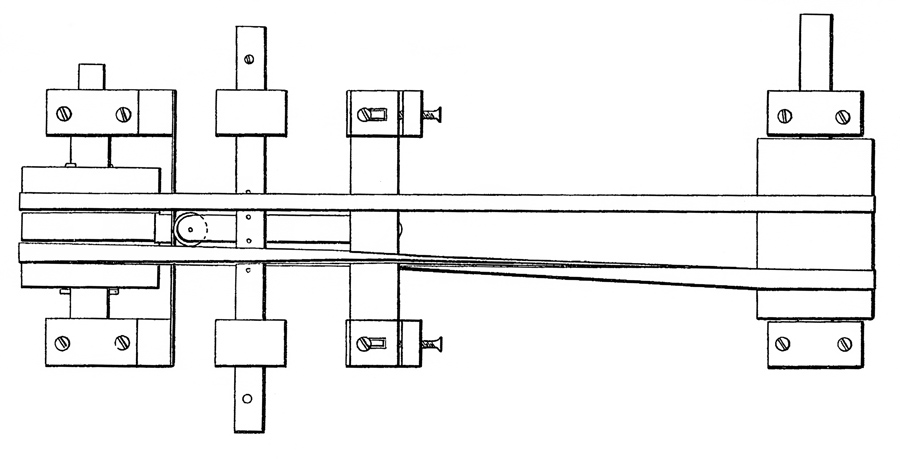
Betteley’s design was predicated on providing “an easier method of bringing the brake to bear. . .upon the fast pulley,” which improved upon “the ordinary method in use, which requires. . .a very heavy strain upon the shipper rope. . .such strain being liable to cause rupture or breakage of the shipper rope.”[5] Patent No. 24,188 described an additional safety brake designed to act if one of the leather belts broke or slipped off the driving pulleys (Figure 3).

Patent No. 24,923, which described the safety designed to prevent the hoisting drum ropes from overwinding or unwinding, included some of the first patent drawings that depicted a complete elevator system. However, the quality of the drawings, which appear to employ a variety of different scales (compare the size of the box-like “car” on the right to the gearing on the left), reveal that, while he clearly possessed a talent for design, Betteley was, in fact, a poor draftsman (Figure 4).
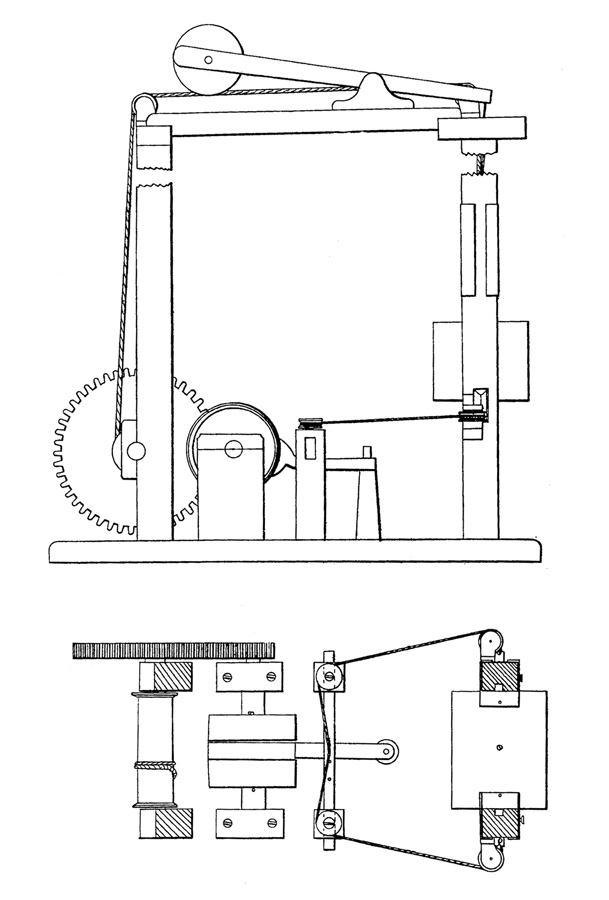
This deficit was also on display in his final patent, titled Hosting Machine (U.S. Patent No. 26,469), which concerned two designs for door safety devices (Figure 5). One system automatically stopped the elevator if the car door was opened. The other was an early interlock design that prevented the shaft door from being opened if the car was not present.
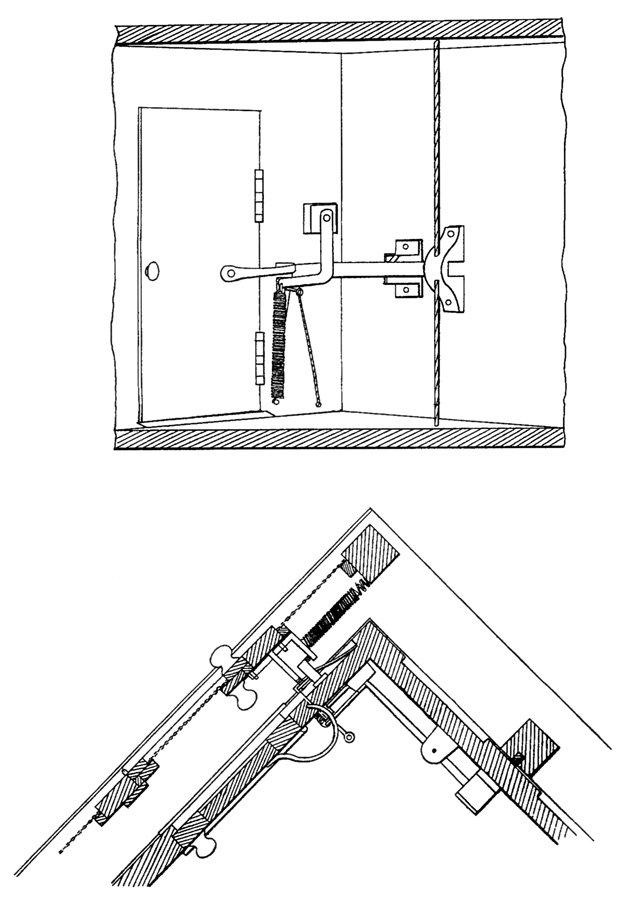
The patent drawings that illustrated the door safeties depicted the corner of an enclosed car. Thus, the drawings are a clear indication that Betteley was explicitly thinking about this safety in terms of its use on a passenger — rather than a freight — elevator. His interest in extending this technology beyond freight platforms to enclosed passenger cars is also supported by the appearance of references to passengers or passenger elevator settings in each of his five patents:
- Patent No. 23,818: The object of my invention is. . .to preserve the lives of persons who may be upon the platform or within the car when any accident occurs.
- Patent No. 24,188: “I. . .have invented a new safety apparatus or automatic device. . .which is particularly applicable to elevators used for raising and lowering persons and goods in factories, stores, hotels, etc.”
- Patent No. 24,923: “I. . .have invented certain new and useful Improvements in Elevators such as are used in warehouses, factories, mines, etc., for raising and lowering persons, merchandise, ores, etc.”
- Patent No. 25,169: “The accompanying drawing represents a top view of a shipping apparatus, such as is generally employed in hotel and merchandise elevators.
- Patent No. 26,469: “The object I have had in view in constructing this elevator has been the prevention of accidents more or less liable to occur in the use more particularly of hotel elevators.”[4, 5, 6, 7, 8]
The fact that three parents refer to elevator use in hotels is also of interest. When Betteley submitted the last of his patent applications on July 28, 1859, the Fifth Avenue Hotel in New York — the site of Otis Tufts’ Vertical Railway Elevator — was still one month from its opening date. Thus Betteley, who was very likely aware of Tufts’ plans, may have conceived of his designs in anticipation of future passenger elevator installations by William Adams & Co.
However, surprisingly, this is where Betteley’s story, with regard to his involvement in elevator design, ends. In 1861, he left William Adams & Co. to pursue other interests. Although he remained active in the Boston area until the late 1880s, he never returned to the world of VT. He appeared one final time in the Boston press in 1887 when the Boston Globe published a letter to the editor he wrote in response to a story that described the recent installation of an air cushion safety device:
“In your issue of August 30, you mention that the improvement in the elevator of Shuman & Co. is the invention of George T. McLauthin & Co. This is a mistake, as you will please find attached to this letter a copy of a patent issued to me for this invention, dated May 3, 1859, and numbered 23,818. As this patent expired long ago, all have a perfect right to use this improvement, and. . .when properly constructed it is a sure and perfect safeguard against accidents.”[9]
Although he was absent from the VT world after 1859, Betteley’s patents, and his inclusion in W. Sloan Kennedy’s 1882 article, which was reprinted countless times throughout the remainder of the 19th century, ensured his place in VT history as one of the industry’s early pioneers.
References
[1] “State Street Block,” Boston Evening Transcript (December 22, 1857).
[2] David Bigelow, History of Prominent Mercantile and Manufacturing Firms in the United States, V. 6, Boston: David Bigelow (1857).
[3] W. Sloan Kennedy, “The Vertical Railway Elevator,” Harper’s New Monthly Magazine (November 1882)
[4] Albert Betteley, Elevator, U.S. Patent No. 23,818 (May 3, 1859).
[5] Albert Betteley, Shipper Gear for Pulleys, U.S. Patent No. 25,169 (August 23, 1859).
[6] Albert Betteley, Elevator for Hoisting Goods in Warehouses, etc., U.S. Patent No. 24,188 (May 31, 1859).
[7] Albert Betteley, Elevator for Warehouses, Factories, Mines, etc., U.S. Patent No. 24,923 (August 2, 1859).
[8] Albert Betteley, Hosting Machine, U.S. Patent No. 26,469 (December 20, 1859).
[9] “The Invention of Albert Betteley,” Boston Globe (September 3, 1887).
Also read: John H. Jallings (1847-1935)
Get more of Elevator World. Sign up for our free e-newsletter.




